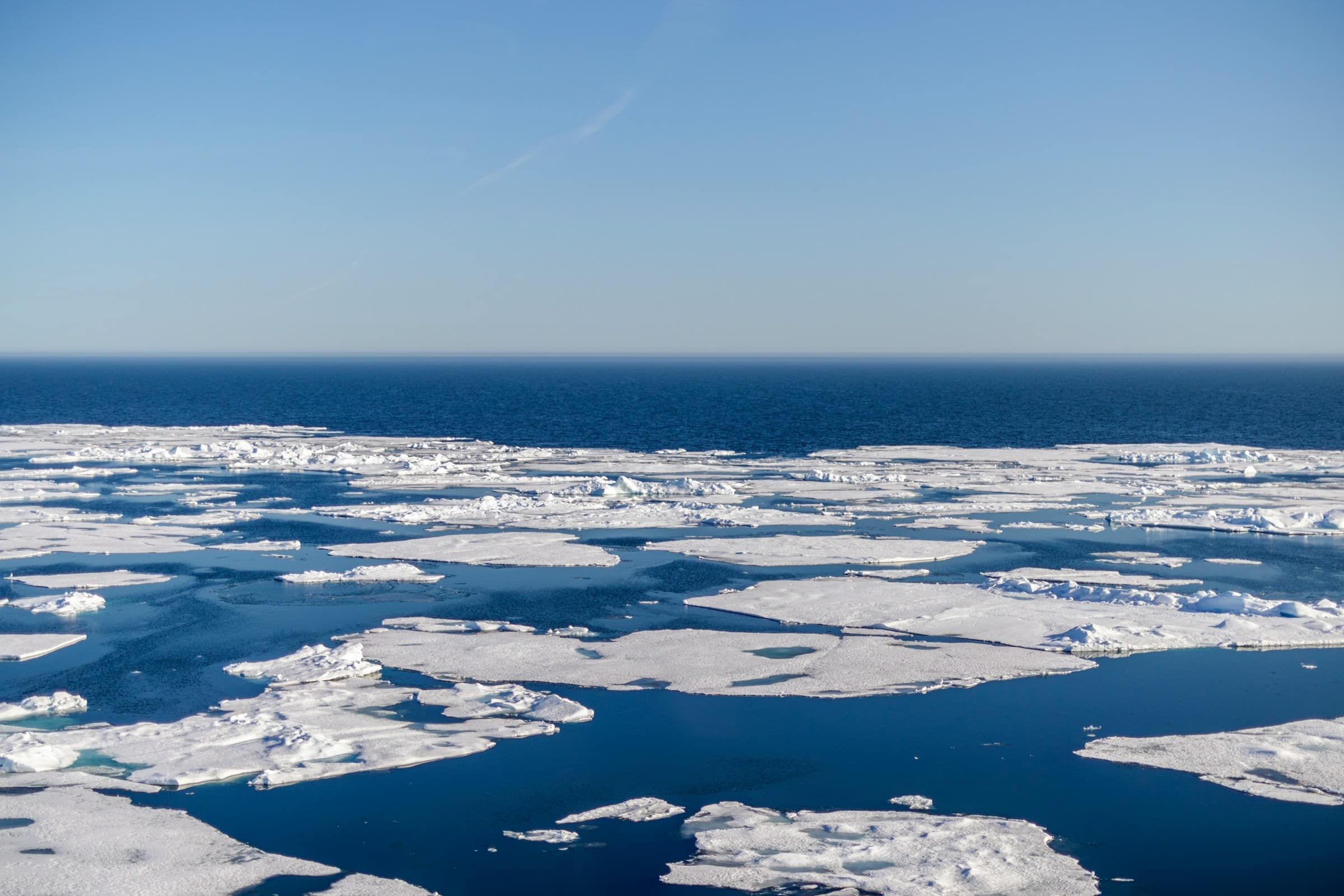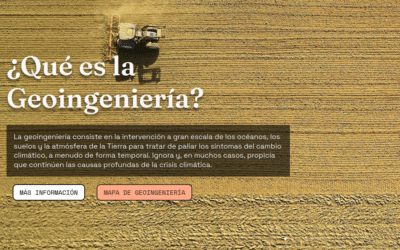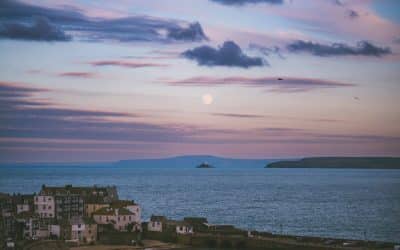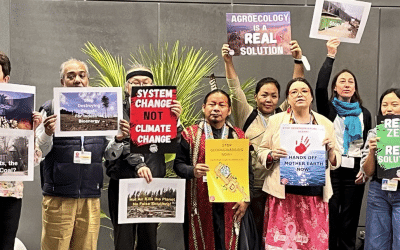This update on Marine Geoengineering through Arctic ice management and other proposals summarises the latest developments on the Geoengineering Monitor Map, highlighting new trends for civil society and climate justice movements to follow in their efforts to oppose geoengineering globally. This update is Part Three of a three-part update on Marine Geoengineering, also covering Ocean Alkalinity Enhancement and biomass sinking. It was researched and written by Anja Chalmin, and published with the support of the Geoengineering Monitor team.
In this update:
- Critical developments in Marine Geoengineering through Arctic ice management and other proposals
- The Arctic Ice Project and Bright Ice Initiative: Arctic ice management projects risk serious harm to the marine environment
- Other Marine Geoengineering projects based on Arctic ice management
- Other Marine Geoengineering projects
Critical developments in Marine Geoengineering through Arctic ice management and other proposals
- Proposals for marine geoengineering extend beyond the seas and oceans, and also target environments such as Arctic ice, geological formations beneath the seabed, coastal areas and the atmosphere above the oceans.
- The Arctic Ice Project is proposing to cover vast areas of Arctic ice with billions of tiny reflective hollow glass balls, but is downplaying the potential impacts of this by claiming that the material is no more than a digestive aid for birds.
- The Bright Ice Initiative is planning to use the same method to restore glacial ice, and has already conducted a two-month trial on a glacier in Iceland.
- The material being used by the Arctic Ice Project and Bright Ice Initiative is actually a durable borosilicate that is used in the manufacture of laboratory equipment. It has been found to have a lower reflection rate than snow, which could potentially accelerate the loss of ice.
- A number of companies such as the UK-based Real Ice Development Company Ltd are planning to use Arctic ice management to generate “cooling credits” on the basis of the reduced warming effect of ice’s higher albedo.
- Three companies including gM-Engineering are commercialising schemes involving atmospheric iron salt aerosol injection over oceans in order to remove methane from the atmosphere, brighten marine clouds and fertilise oceans.
- UK-based Brilliant Planet Ltd is selling carbon credits by growing algae in on-shore raceway ponds, and then drying and burying it in landfill sites in Morocco. The landfill sites are likely to be inadequately lined and therefore risk groundwater contamination.
- Work is underway to develop a new voluntary standard for seaweed farms to sell carbon credits, even though a number of recent studies including an IPCC Special Report have cast serious doubt over the viability of seaweed farming as a climate mitigation strategy.
The Arctic Ice Project and Bright Ice Initiative: Arctic ice management projects risk serious harm to the marine environment
The Arctic Ice Project (AIP) proposes to cover Arctic land and sea ice with billions of tiny hollow glass balls in order to slow melting and/or restore ice. API describes the layer of floating reflective material that it is using as “an amorphous glass primarily composed of silicon dioxide (“silica”).” It adds that “silica is an inert compound made of two of the earth’s most abundant materials” and a “major constituent of sand.”
A recent study commissioned by AIP and conducted in the simulated Arctic Ocean environment operated by the Norwegian research institute SINTEF reveals the material to be commercially-available and very stable hollow glass microspheres (HGMs), which are lightweight, highly reflective and resistant to crushing. The study looked at the albedo effect, ecotoxicology and deployment methods of four HGMs, and a borosilicate glass marketed by Potters Industries LLC achieved the best test results.
The borosilicate glass AIP intends to use in large quantities is described as being very durable and already used in laboratory equipment, cooking utensils and light bulbs, among other things. AIP downplays the impacts of the material, stating that “Humans, animals, birds, and fish alike ingest silica regularly. Birds look for and select larger grains of silica to aid digestion in their stomachs and fish swim through it at about one part per million of ocean water.” AIP also claims that HGMs would degrade after six to 12 months, while the SINTEF study recommends that toxicity tests are carried out and concludes that ”Further studies are needed to determine the element dissolution from HGMs and other potential environmental implications such as impacts on organisms.”
AIP has been modelling the deployment of the glass microspheres in selected regions of the Arctic since 2018, in areas such as the Beaufort Gyre and Fram Strait, and is also modelling the how the HGMs could be applied on large-scale, such as using ships with blowers. On its website, AIP states that “field studies will only begin once we have ensured our HGM methodology is scientifically sound.” However, the fact that AIP has already conducted field trials on five lakes in the US and Canada contradicts this statement. Furthermore, local communities were not consulted over the trials, never gave their consent to them taking place and opposed further field trials.
In one field trial, a 0.5 millimetre thick layer of HGMs was deployed over 302 square metres of a private freshwater lake, requiring 18 kilograms of the material. Applying the same layer over 15,000 to 100,000 square kilometres in the Frame Strait or Beaufort Gyre, as proposed in 2018 by AIP’s founder, Leslie Field, would require 0.9 to 5.9 million tonnes of HGMs.
Leslie Field left AIP in 2022 to start the Bright Ice Initiative (BII), which wants to apply the same method to glaciers. BII has a similar communication strategy to AIP, and describes the glass microspheres as nature-based and safe. The company has already conducted a two-month trial on Iceland’s Langjokull glacier in 2023 and is also seeking permission to conduct a three-year trial on the Chhota Shigri glacier in the Indian Himalayas.
Both AIP and BII try to legitimise their approach through publishing peer-reviewed scientific journal articles, such as an article published in Earth’s Future in 2022. The paper, published jointly by the two companies, examines the albedo of HGMs and concludes that the “albedo-enhancing approach shows potential to help preserve ice in selected regions in the Arctic and elsewhere.” However, a study published in the same journal in the same year but without the involvement of AIP and BII concluded that the glass microspheres may actually accelerate melting, and the author stated that “The use of microspheres as a way to restore Arctic sea ice isn’t feasible.”
Other Marine Geoengineering projects based on Arctic ice management
The UK-based Real Ice Development Company Ltd, founded by students at Bangor University, has developed an ice formation device that draws saline water from underneath the surface of sea ice and sprays it on top, creating a pool of water on the surface that is supposed to freeze. Prototype tests have taken place in several locations, including a 10-day test in Cambridge Bay, Nunavut, Canada, in January 2024. In the same month, Real Ice announced plans to conduct a large-scale test on 100 square kilometres of ice in Canada and to sell “cooling credits” in the process. These would work in a similar way to carbon credits and would be calculated according to the cooling effect created by the ice’s increased albedo.
Arctic Reflections B.V., founded by researchers at Delft University, the Netherlands, is commercialising the same approach as Real Ice and plans to carry out what will be the first field test of its kind in Spitsbergen, Svalbard, in 2024. Both approaches to accelerating the growth of sea ice are based on modelling work by S.J. Desch, a researcher at Arizona State University.
Other Marine Geoengineering projects
ISA method: Methane removal combined with brightening marine clouds and fertilising oceans
GM-Engineering, founded by Franz Oeste, is proposing to use iron salt aerosols (ISA) to combine atmospheric methane removal with marine cloud brightening and ocean fertilisation. The aerosols would be released into the lower atmosphere over an ocean, initially to act as condensation nuclei and promote the formation of marine clouds. At the same time, ISA would initiate oxidation processes that break down methane into CO2 and H2O. At a later stage, the iron-rich aerosols are expected to be flushed from the atmosphere into the ocean, stimulating the growth of marine algae.
Atmospheric Methane Removal (AMR) AG, based in Switzerland, also aims to commercialise Franz Oeste’s ISA approach, and plans to release ISA into the atmosphere over a large marine area by building methane removal platforms with ~400 metre high towers, for example on decommissioned oil rigs. According to AMR, dispersing 1.8 million tonnes of ISA from 40 towers would be required to remove half of the world’s methane annually. AMR’s preferred locations for the platforms are in oceanic regions near the equator, such as in the Pacific off the coast of Chile or in the Atlantic off the coast of Namibia. AMR also announced plans to sell methane removal certificates, calculating that one certificate for one tonne of methane would be equivalent to 25 carbon credits. A one-year field trial was due to begin in 2023, but appears to have been delayed. AMR’s scientific advisory board includes Franz Oeste, who has worked as a consultant for the Silicon Valley-based company Blue Dot Change, which has also announced plans to commercialise the ISA method. No timetable has yet been set for open-air trials.
Solid Carbon: Direct Air Capture and CO2 mineralisation in the Cascadia Basin
The research partnership Solid Carbon, led by Ocean Networks Canada, has designed a demonstration floating platform capable of capturing CO2 from ambient air and injecting it below the seafloor into deep-sea basalt formations for mineralisation. The project partners are currently seeking funding to conduct a demonstration in the Cascadia Basin off British Columbia, Canada.
Brilliant Planet Ltd: Landfilling algal biomass grown in huge coastal ponds
UK-based Brilliant Planet Ltd is selling carbon credits generated by growing microalgae in on-shore, seawater-filled raceway ponds (shallow ponds with a circuitous and continuous water flow), harvesting and drying the algae and burying it in lined landfill sites in desert areas. The company is using artificial upwelling to pump nutrient-rich deep-sea water into their ponds in order to provide the algae with the necessary nutrients and CO2.
According to Brilliant Planet, once the seawater has been used in the ponds it is depleted of CO2, and is then returned to the ocean. The company claims that the algal biomass and the CO2 it contains can be safely stored for more than 1,000 years because the landfill sites are lined with a geomembrane and the biomass is dry, very salty and acidic. Following pilot trials in South Africa, Morocco and Oman, Brilliant Planet Ltd has leased 6,100 hectares of land outside Akhfenir in southern Morocco and built three hectares of raceway ponds.
Brilliant Planet Ltd has already raised over US$ 26 million and sold carbon credits based on this concept, yet the following issues remain:
- There are no publicly-available, independent studies confirming that the geotextile the company uses will last more than 1,000 years and be resistant to highly saline and acidic biomass.
- A comparison of landfill techniques does not give the impression that Blue Planet’s are designed for the long term. For example, in Europe there is a requirement that even non-hazardous waste must be contained by multiple layers above and below a landfill to protect the soil and groundwater. These layers must be at least 0.5 metres thick below and at least 1.5 metres thick above the landfill.
- The Akhfenir region is an area with shallow aquifers, and it is unclear who will be responsible if the liner is damaged and the groundwater is contaminated.
- It is not known how often, how thoroughly and over what period of time the company will conduct inspections and carry out monitoring of the landfill sites.
- In areas with sand drift (where sand is easily carried by the wind), raceway ponds are usually covered to prevent contamination. However, the ponds at Brilliant Planet’s site in Morocco are uncovered and the carbon content of the algae is determined by weighing, among other methods. It is unclear whether the variation in sand content will be taken into account.
Brilliant Planet has announced plans to expand its Morocco raceway ponds to 200 hectares and later 1,000 hectares, and is also interested in other sites, including coastal deserts in Chile and Namibia.
Generating carbon credits from seaweed farms
As well as growing seaweed in order to sink it, companies are growing seaweed in near-shore areas to generate carbon credits. The idea is that the seaweed will absorb the CO2 dissolved in seawater and that this can be captured by harvesting the macroalgae. Among them are Kelp Blue Biotech B.V. in the Netherlands and Carbon Kapture Ltd. in the UK. The latter has set up its first farm in north-west Ireland, in Mulroy Bay, North Donegal. The farm consists of 100-metre-long ropes seeded with young seaweed seedlings and secured to the seafloor with an anchor. The company plans to use the harvested seaweed to produce biochar, which will then be spread onto agricultural land in order to sell carbon credits.
Kelp Blue Biotech plans to establish large-scale kelp farms in a similar way and to use the harvested kelp in consumer products, and to sell carbon credits. The company operates a pilot kelp farm in the Namibian coastal waters of Sheerwater Bay and a processing facility in Luderitz, and has plans to establish large-scale kelp farms in coastal waters in Namibia, near Craig and Klawock on Prince of Wales Island in Alaska and in Akaroa Bay in New Zealand.
Another development in seaweed farming is the Oceans 2050 Foundation, which has launched the Seaweed Carbon Farming Project, a 15-month study to measure the CO2 sequestered by seaweed in sediments. It is working with 21 seaweed farms in 12 countries on five continents. Based on this study, Ocean 2050 plans to develop a new voluntary carbon standard in order to certify carbon credits generated from farming seaweed.
However, a recent study in the journal Nature Communications Earth & Environment estimated that it would take about one million square kilometres of the most productive ocean regions to grow enough seaweed to remove one gigaton of carbon from the atmosphere each year. The area would need to be tripled outside the most productive marine areas. Large amounts of seaweed also have a high nutrient demand, which can have a negative impact on ocean ecology, such as the growth of phytoplankton. Reduced phytoplankton productivity due to nutrient depletion would in turn mean less carbon can be sequestered in the ocean, and negative impacts on marine food chains are also feared.
The IPCC’s Special Report The Ocean and Cryosphere in a Changing Climate (2022) also comments critically on seaweed farming. It states that “There is, however, currently low confidence that enhancement of natural seaweed production can provide a significant mitigation response, due to large uncertainties relating to sequestration duration and effectiveness. Such considerations relate to transport pathways, the fate of material transported to deeper water, and the timescales of its subsequent return to the atmosphere over decadal to century timescales.” On the other hand, “Coastal blue carbon ecosystems, such as mangroves, salt marshes and seagrasses, can help reduce the risks and impacts of climate change, with multiple co-benefits.”




